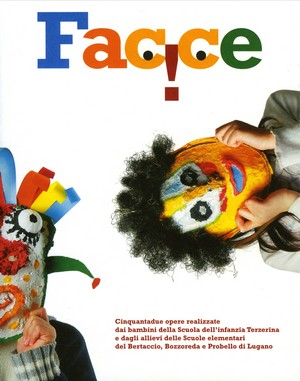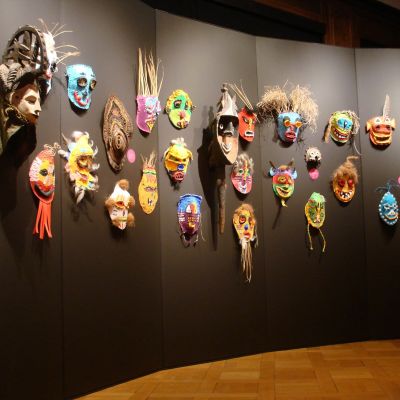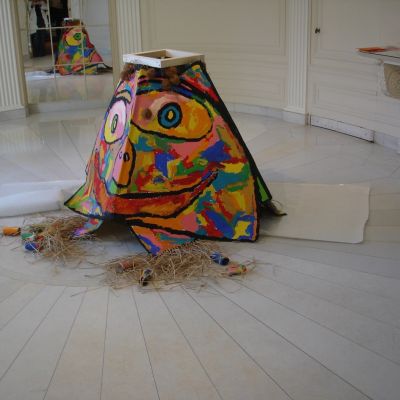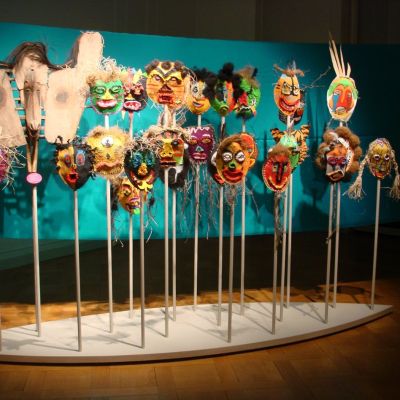HELENEUM – LUGANO
The exhibition intends to lead the MUSEC public to discover the ways in which children’s art describes the expressive multiplicity of the face and its configuration, perhaps at the highest level, in the articulated and mysterious universe of the mask. Over the course of six months, the children of three primary school classes and one kindergarten class in Lugano, followed by their teachers, explored the face at length and delved into the theme of the mask and masking, from the physical object to animal mimicry, from ritual masks to the stereotypical faces of the Comedy of Art, from the integral tattoos of the Maoris to the unpredictable outcomes of masking in Western culture. The starting point for the work were the African and Melanesian masks on display at MUSEC, which were observed, examined, analysed and drawn. Conceived as faces and expressions of the self, the masks made it possible to concretely bring the children closer to the theme of the person and personality, introducing them in a playful way to the complexity of the relationships that exist between the ‘individual’ and the society of which they are part. At the end of the educational course, the children from the pre-school made a collective mask at the museum with the help of artist Silvia Paradela, which unites them in a compact group and – at the same time – protects them. Each primary school child, on the other hand, has produced his or her own face/mask: almost the outcome of a true inner research that manifests individuality. The temporary exhibition presents the fifty-two masks made by the children alongside six significant works from MUSEC’s Brignoni Collection.

The Dèibambini project was founded in 2005 as a platform for interaction between the museum and the school. In its first ten years, the project allowed children to engage with different topics, with the aim of increasing their awareness of their own potential and inner vision and strengthening their ability to interpret the world. Since 2022, the starting point has been the works of children from the past. The idea is to build a bridge between the children’s creativity of yesterday and today, through the in-depth exploration of the expressive contents that not only interconnect cultures, but have served as an extraordinary source for the renewal of artistic languages in the 20th century. A solid bridge, full of poetry, to connect the generations.




